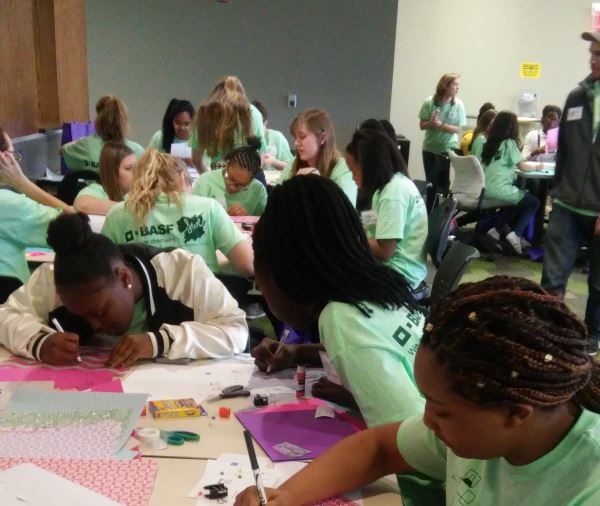
Careers requiring a solid background in STEM disciplines are growing rapidly in the U.S. According to STEMconnector.org, 8.65 million workers will be needed in these fields by 2018, but few students have the proficiency necessary to fill these positions.
In response to the growing, schools are focusing more and more on STEM at every grade level. Parents, teachers, businesses and even government officials want kids to be ready to enter into STEM-related jobs. Understanding STEM and how to apply its concepts to education is essential for getting kids of all ages excited about the field.
What is STEM?
STEM education encompasses four major subjects: science technology engineering and mathematics. Any class, project or activity with a focus on one of these areas may be called STEM. Much more than an academic pursuit, STEM is foundational to many basic activities in life.
Today’s schools start with introductory STEM courses in the elementary grades. Students must learn simple mathematical concepts and the core ideas of science before they’re able to build on these subjects in middle school. By high school, the curriculum begins to address advanced STEM concepts and shifts to focus more on applying the subjects to future jobs.
STEM Inside and Outside the Schools
Kids who start early with STEM begin their academic careers with a strong foundation in key areas employers will be looking for in the years to come. To prepare students for the growing job market, schools are taking a more practical, interactive approach to STEM subjects.
A typical STEM lesson moves beyond books to include collaborative projects requiring observational skills and the ability to articulate the process by which conclusions are reached. Some schools now focus entirely on STEM. Others have established STEM programs within the framework of the standard curriculum.
Interest in STEM must also be fostered in other settings Participating in “out-of-school” STEM activities, including workshops and classes, has been shown to improve grades and increase engagement in academic settings. From formal extracurricular activities to do-it-yourself projects performed at home or with friends, STEM skills can be taught in a variety of creative ways.
How to Take Advantage of STEM in Your Community
Out-of-school STEM opportunities are available from many local schools, businesses and organizations. High schools, colleges and universities often offer community education programs with classes on a variety of topics. Some college campuses partner with high schools to provide educational opportunities for students wishing to pursue STEM careers. Clubs on school campuses provide the chance to apply STEM concepts in practical ways.
Daily life has its own teachable STEM moments. A walk in the woods becomes a science lesson when a new bird or plant is spotted. Driving to the grocery store can be an exploration of the physics of movement. Even watching television is no longer passive when kids are encouraged to consider the complexity of the digital framework through which the programs are delivered.
Finding STEM Resources Online
Parents and STEM educators looking for more resources can find a wealth of information, educational tools and engaging activities on the internet. MIT, Johns Hopkins and other well-known universities share STEM-related lessons through their Open Courseware programs, including free downloads of course materials.
Find engaging lectures and lessons for students of all ages on iTunes U, or visit the TED-Ed site for a unique educational experience blending knowledge from some of today’s leading minds with interactive quizzes and discussions. Familiar names, such as the National Science Foundation and the Discovery Channel, provide free multimedia and articles to the public. Additional reading material can be found through Google Scholar, and YouTube houses a large collection of educational videos from many reputable sources.
Creating Local STEM Partnerships
Communities without adequate STEM opportunities outside the classroom must work together to create an environment offering students a variety of ways to learn. By reaching out to businesses, universities and organizations, schools and STEM educators lay the foundation for educational programs to support an ongoing interest in science, technology, engineering and mathematics.
Partnerships may give rise to:
- Funding for in-school STEM activities
- Special clubs or after-school programs
- Field trip opportunities
- Scholarship awards or contests
- Internships
- Mentoring programs
In return for partnering with schools, local businesses and groups develop positive reputations for being involved with the improvement of STEM education. STEM continues to be an integral part of life and will only grow in importance as technology and science expand into common industries. As the foundation of many careers in the U.S. and around the world, STEM activities are essential for kids to succeed throughout life.
C.R.A.F.T. Partners with Olivet Nazarene University
The C.R.A.F.T. organization had an opportunity to partner with Olivet Nazarene University in April 2017. The Society of Women Engineers held an “Introduce Girls to Engineering” event which provided C.R.A.F.T. the opportunity to sponsor several girls to attend the event. The girls spent the day at Olivet engaging in various activities that exposed them to Science,Technology, Engineering, and Mathematics.
Take-a-Ways
With parents and educators working together and recruiting the help of community organizations and businesses, it’s possible to build a network to support STEM learning at all stages of life. Kids with access to this network can grow and thrive in the areas of science technology engineering and mathematics and enter the workforce with the tools they need to thrive as modern innovators.
